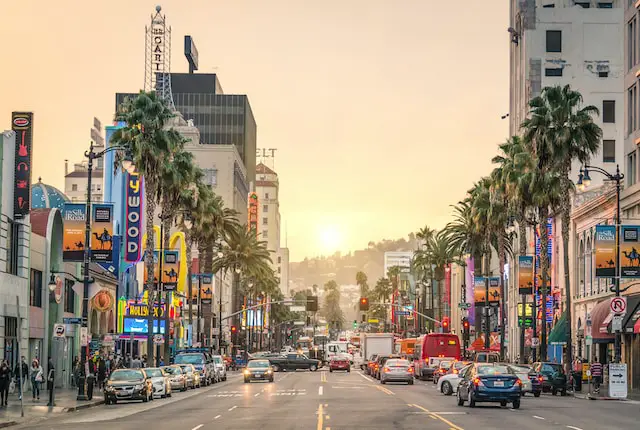Why Is Housing So Expensive In California?
California is known for its stunning coastline, year-round sunshine, and vibrant culture, which make it one of the most desirable places to live in the United States. However, with this popularity comes a hefty price tag, especially when it comes to housing. California is infamous for having some of the highest housing costs in the country, and there are a variety of factors that contribute to this issue. In this article, we will explore the top 10 reasons why housing is so expensive in California.
Limited Land Availability
One of the primary reasons for the high cost of housing in California is the limited availability of land. The state’s geography is diverse, with mountains, forests, and desert landscapes, making it difficult to build on large swaths of land. Additionally, many cities have already developed their land to capacity, leaving little room for expansion. This results in a limited supply of housing, which drives up prices.
High Demand
California is the most populous state in the country, with over 39 million residents. The state’s diverse economy and job opportunities attract people from all over the world, increasing the demand for housing. With more people competing for a limited supply of housing, prices naturally go up.
Strict Regulations
California has some of the most stringent building codes and environmental regulations in the country. While these regulations are put in place to protect residents and the environment, they also increase the cost of building new housing. Builders must adhere to specific guidelines and requirements that can drive up construction costs significantly.
High Labor Costs
California has one of the highest minimum wages in the country, which can increase the cost of labor in the construction industry. Additionally, many contractors and workers are unionized, which can lead to higher wages and benefits.
High Material Costs
The cost of building materials in California is also higher than in many other states. This is due to the high demand for materials, as well as the strict regulations around their use. The cost of transporting materials to California also adds to their expense.
Limited Public Transportation
While California has a well-developed freeway system, its public transportation infrastructure is limited in comparison. This means that many residents rely on cars, increasing demand for parking and contributing to traffic congestion. This can lead to higher costs for parking and longer commute times, which can make living in certain areas less desirable.
High Property Taxes
California has one of the highest property tax rates in the country. This tax is based on the value of the property, which can be particularly high in areas where housing is already expensive.
Natural Disasters
California is prone to earthquakes, wildfires, and other natural disasters. While these events are rare, they can be devastating and costly. As a result, insurance premiums in California can be higher than in other states, making the cost of owning a home more expensive.
Short-Term Rental Restrictions
Short-term rentals, such as Airbnb, are restricted in many areas of California, particularly in popular tourist destinations. This reduces the supply of rental properties and increases the demand for traditional housing, leading to higher prices.
Gentrification
In many areas of California, gentrification has driven up housing prices. This occurs when wealthier residents move into an area and drive up the cost of living. As a result, long-time residents may be priced out of their homes, and the community’s character may change significantly.
In conclusion, there are many reasons why housing is so expensive in California, from limited land availability and high demand to strict regulations, labor and material costs, and natural disasters. These factors combine to create a challenging housing market that can be difficult to navigate. While the cost of housing may be high, many residents believe that California’s climate, culture, and job opportunities make it worth it.
Frequently Asked Questions
What is the minimum wage in California?
As of January 1, 2023, the minimum wage in California is $15.00 per hour for employers with 26 or more employees and $14.00 per hour for employers with 25 or fewer employees. This is higher than the federal minimum wage, which is currently set at $7.25 per hour.
The minimum wage in California has been increasing steadily in recent years. In 2016, it was raised to $10.00 per hour, and it has been increased by $1.00 per hour each year since then. In 2022, it reached $15.00 per hour for employers with 26 or more employees, and it will continue to increase by inflation each year thereafter.
California has one of the highest minimum wages in the United States, which is partly due to the state’s high cost of living. The minimum wage is intended to provide workers with a basic standard of living, but many argue that it is still not enough to meet the high cost of housing and other expenses in California.
There have been ongoing discussions and debates about increasing the minimum wage further in California, with some calling for a $20 per hour minimum wage. However, others argue that such a high minimum wage could lead to job losses and other negative economic impacts.
How much is gas in California?
Gas prices in California can vary depending on several factors, including the region, time of year, and global oil prices. As of April 29, 2023, the average price of gas in California is $4.52 per gallon for regular unleaded gasoline, which is higher than the national average of $3.45 per gallon.
California has some of the highest gas prices in the United States due to several factors, including state taxes, regulations, and transportation costs. The state has implemented several environmental regulations aimed at reducing emissions from vehicles, which can add to the cost of producing and distributing gasoline.
In addition, California has a state excise tax on gasoline, which is currently set at $0.417 per gallon. This tax is used to fund various transportation projects and infrastructure improvements throughout the state.
The price of gas in California can also be affected by seasonal fluctuations in demand. For example, gas prices may be higher during the summer months when more people are traveling for vacations and holidays.
Overall, the high cost of gas in California can contribute to the state’s overall high cost of living. However, many Californians also prioritize environmental concerns and are willing to pay more for cleaner transportation options.
How many people live in California?
The estimated population of California is approximately 39.3 million people, making it the most populous state in the United States. California has a diverse population that includes people from many different ethnic and cultural backgrounds. The state is home to several large metropolitan areas, including Los Angeles, San Francisco, and San Diego, which are home to millions of people each. California’s population has continued to grow over the years, driven by factors such as immigration, job opportunities, and a desirable climate.
What is in a California roll?
A California roll is a type of sushi roll that originated in the United States. It typically consists of sushi rice, crab meat, avocado, and cucumber wrapped in seaweed (nori) and then rolled in sesame seeds or tobiko (flying fish roe).
The California roll was first created in the 1960s in California, hence its name. It was originally made with avocado, crab meat, and mayonnaise, but over time, the recipe evolved to include other ingredients like cucumber and sesame seeds.
Today, the California roll is a popular menu item at sushi restaurants around the world. Some variations may include other ingredients like tempura shrimp, spicy sauce, or cream cheese, but the basic ingredients of crab, avocado, and cucumber remain the foundation of the dish.
How big is California?
California is the third largest state in the United States, with a total area of approximately 163,696 square miles (423,970 square kilometers). It stretches approximately 770 miles (1,240 kilometers) along the west coast of the United States and has a diverse landscape that includes mountains, deserts, beaches, and forests.
How many counties in California?
There are 58 counties in California, ranging in size from Los Angeles County, which is the most populous county in the United States with over 10 million residents, to Alpine County, which is the least populous county in the state with less than 1,200 residents.
Each county has its own elected government, including a board of supervisors, which is responsible for the administration of the county. The county government provides many important services to residents, such as law enforcement, public health, and social services.
What is California known for?
California is known for a wide variety of things, including:
- Hollywood and the entertainment industry: California is home to the famous Hollywood district, where many movies, TV shows, and music videos are produced. It is also home to many celebrities and entertainment icons.
- The Golden Gate Bridge: This iconic suspension bridge in San Francisco is one of the most recognizable landmarks in the United States.
- Beaches and surfing: California has some of the most beautiful beaches in the country, including Malibu, Santa Monica, and Venice. It is also a popular destination for surfers from around the world.
- Wine country: California’s Napa and Sonoma valleys are known for producing some of the finest wines in the world.
- Technology: California is the birthplace of the tech industry, with Silicon Valley being home to many of the world’s largest and most innovative technology companies.
- National Parks: California is home to some of the most stunning national parks in the United States, including Yosemite, Joshua Tree, and Sequoia National Parks.
- Agriculture: California is the largest agricultural producer in the United States, with crops including almonds, avocados, grapes, and strawberries.
- Diversity: California is one of the most diverse states in the United States, with a rich blend of cultures and languages represented.
Overall, California is known for its natural beauty, innovation, creativity, and diversity.
What is California sales tax?
The sales tax in California varies by location as it is made up of state, local, and district taxes. As of 2023, the base state sales tax rate in California is 7.25%, but the total sales tax rate can range from 7.25% to 10.25% depending on the county and city. Some areas may have additional district taxes, which can increase the total sales tax rate. It’s important to note that certain products such as groceries and prescription medications may be exempt from sales tax.
How far is Hawaii from California?
The distance between Hawaii and California varies depending on which cities you are comparing. The shortest distance is between Hilo, Hawaii, and Crescent City, California, which are approximately 2,250 miles (3,620 kilometers) apart. The distance between Honolulu, Hawaii, and Los Angeles, California is approximately 2,550 miles (4,100 kilometers). The distance between other cities in Hawaii and California will vary based on their respective locations.
What to do in California?
There are countless things to do and see in California, as it is a state filled with natural beauty, cultural attractions, and vibrant cities. Here are just a few suggestions:
- Visit the iconic Golden Gate Bridge in San Francisco.
- Explore the natural wonders of Yosemite National Park.
- Take a stroll along the famous Venice Beach Boardwalk in Los Angeles.
- Experience the glamour of Hollywood with a visit to the Walk of Fame and the Chinese Theatre.
- Go wine tasting in the scenic Napa Valley.
- Visit the historic Alcatraz Island in San Francisco Bay.
- Spend a day at Disneyland or Universal Studios Hollywood.
- Take a scenic drive down the Pacific Coast Highway.
- Hike in Joshua Tree National Park and admire the unique desert landscape.
- Relax on the beautiful beaches of Santa Barbara or San Diego.
These are just a few of the many things to see and do in California. The state offers something for everyone, whether you’re interested in outdoor adventures, cultural attractions, or simply soaking up the laid-back West Coast vibe.
What is the capital of California?
The capital of California is Sacramento.
Why is California so expensive?
California is often considered one of the most expensive states in the US. While there is no single answer to why the cost of living in California is so high, here are the top 10 reasons why:
- Housing: The high cost of housing is one of the most significant factors in California’s overall high cost of living. Housing prices have soared over the years, making it difficult for many residents to afford to buy or rent a home.
- Taxes: California has one of the highest state income tax rates in the country, with a top marginal rate of 13.3%. Property taxes are also relatively high, which adds to the overall cost of living.
- Cost of Doing Business: California is known for its high cost of doing business, with high costs for things like workers’ compensation insurance, liability insurance, and energy.
- Regulation: California has a reputation for being highly regulated, which can drive up costs for businesses and individuals.
- Transportation: Transportation costs can be high in California, especially in cities like Los Angeles where traffic congestion is a major issue. Gas prices in California are also typically higher than the national average.
- Energy: The cost of energy in California can be high due to the state’s reliance on renewable energy sources and high energy taxes.
- Health Care: The cost of health care in California is higher than in many other states due to a combination of factors, including high insurance premiums, high drug prices, and a shortage of medical professionals.
- Education: California is home to many prestigious colleges and universities, but the cost of tuition and fees at these institutions is often very high.
- Food: The cost of food in California can be high due to the state’s high minimum wage, high labor costs, and strict agricultural regulations.
- Natural Disasters: California is prone to natural disasters such as earthquakes, wildfires, and droughts. The cost of preparing for and recovering from these events can be high.
While there are certainly many benefits to living in California, the high cost of living can be a significant barrier for many people.













